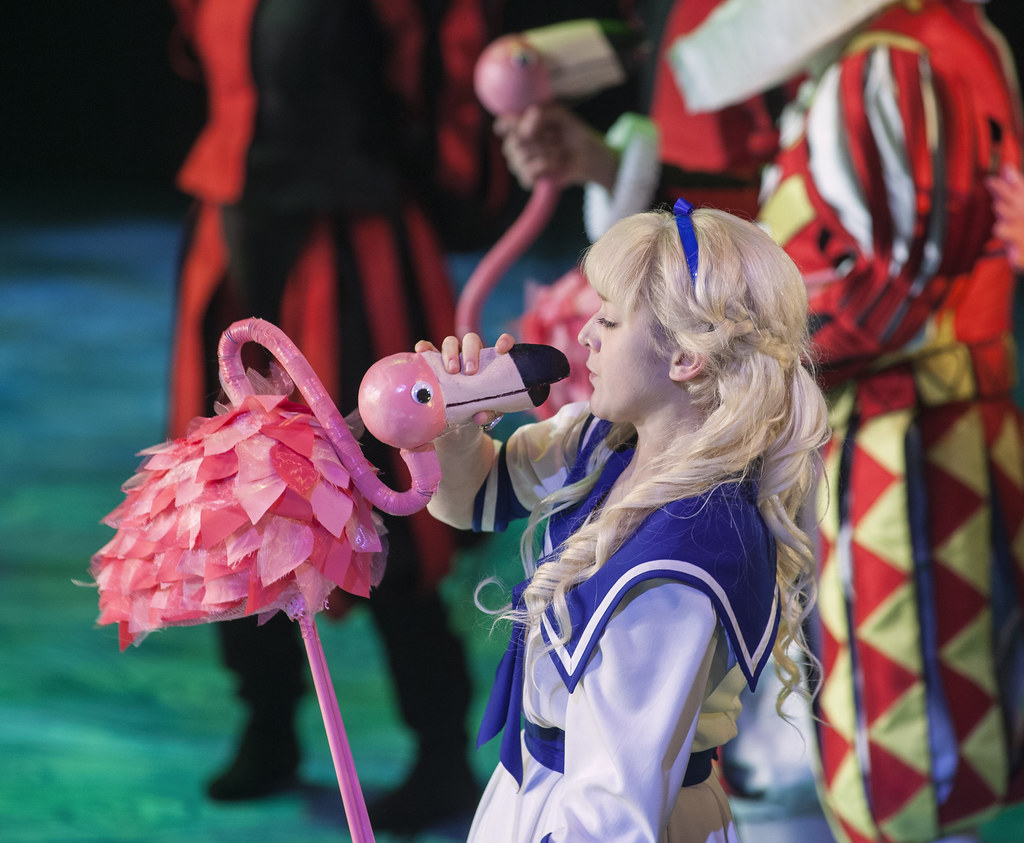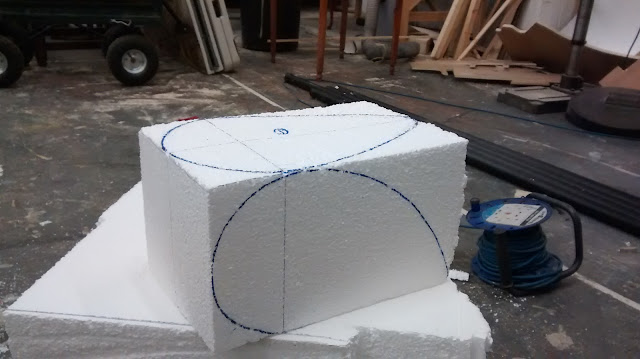Shortly after returning from a trip to Beijing to see my brother (partly why there hasn't been too many posts recently!) I was commissioned to help Vision Mechanics make some puppets for the Edinburgh Lyceum's Christmas show, Alice in Wonderland. I was overjoyed and somewhat nervous - this would be the first time I'd be paid for my work. The prospect, while helping to boost my confidence and validate (in my mind at least) my title as a "Prop Maker"- also brought feelings of fear and apprehension. The responsibility that comes with a paid job most certainty exceeds that of any internship I've taken on. Your employers are relying on you to deliver the project on budget and to a high standard, this - when you add the pressure of a deadline can lead to high amounts of stress. Imposter-sydrome is something I think anyone deals with (even Adam Savage says he experiences it on a daily basis, listen to the podcast where he talks about the very subject here!
"I don't know what the hell I'm doing, why am I even trying!?" "There's a million other people out there who are so much better than I, what makes ME so special?"
These are thoughts that enter my brain on a daily basis, and this job helped to draw out these insecurities even more.
Having said all this, when those thoughts have been dealt with (which definitely has to be a proactive, conscious effort) I can start to enjoy what I love doing - making things with my bare hands, solving problems, bringing an idea, an intangible quantity into the physical world.
An idea, a crazy idea I had as a young kids is starting to become a reality - the road is yet long, bumpy and hilly (throw in a couple of sea-crossing for good measure) but as a wise wizard once said:
"It's a dangerous business walking out of one's front door" but "Home is now behind you, the world is ahead!"
Any who-de-doody, onto the puppet build!
So there are three flamingos in the play which are used to play croquet, check out this clip of the flamingos in Disney's Alice in Wonderland. The design breif was:
The Flamingos need to have rigid necks while they're being used as clubs, then flexible necks while they're being used as puppets, the mouth also needs to have a spring mechanism.
Initial Sketch for shape of bird.
I first started with the body. I'd seen Ted Haines use this carving technique in one of the Stan Winston School videos, It's a great way to take away a lot of material and produce the initial shape quickly. I drew the shape of the body from the top and sides onto a polystyrene block.
I then used a saw to cut out the shape. When the sides were cut out, I taped the off-cuts back to the initial block so I could cut the top shape.
I then sanded the shape until it was nice and smooth and no flat surfaces were left. The polystyrene body was used as a form to shape varafrom (thermoplastic) on top of. This was because the body needed to be hollow, we also needed three identical flamingos so this would ensure that each body would be exactly the shame shape.
Here is my initial drawing of the mouth mech. We found a great video on youtube about how to make a very cheap and simple spring mouth mechanism which I used to help design my one.
The heads needed to be round so I used polystyrene balls for the initial shape, however polystyrene isn't particularly structurally reliable. I needed to have a solid piece of material inside the polystyrene head which I could attach the mouth mechanism to. In solution to this problem I carved out a channel straight though the center of the ball and inserted a block of wood in the hollow.
Top mouth plate inserted though polystyrene and into wood.
The beak was going to be made from foam, so I needed to make a pattern. I built up the shape I wanted with foil and masking tape, then covered this with duct tape. The beak is symmetrical so I only needed to create one side of the pattern.
Once the duct tape was removed from the from, I flattened it out (cutting the necessary darts so the shape would be retained when transferred to foam).
Here is the pattern transferred to foam and glued together. I cut a channel along the bottom so the foam could be stuck to both the side and bottom of the mouth plate.
Time to explain how I made the magical rigid-to-flexible neck. The flamingos legs are made from two wooden dowels. One of these dowels is permanently fixed to the body, however the other slides up and down the body and neck (Which is made from a flexible, hollow pipe). When the neck needs to be flexible, the leg is in the "down position" and when it needs to be rigid, the actor pushes the dowel up though the body, though the pipe and into the head. There is a hole in the head which is just a tad smaller than the dowel, easy enough for an actor to push it in, but tight enough so it won't fall out.
Here is the neck being attached to the head.
I then covered this with Milliput epoxy clay to restore the sphere shape. A wooden dowel (ahem, pencil, we were on a tight budget!) was inserted for the actors to use as a handle to control the puppet.
Mouth Mech working and holes in top and bottom of the head filled in with milliput!
Now unfortunately this is kinda where time was running out and the deadline was approaching rather fast. In result of this, snapping photos took a back seat. The varafrom body and executing the rigid-flexible neck mechanism were next, I would be lying if I said that all my ideas worked, but I got there in the end! (and just in time for the deadline, phew!)
Here are some pictures of the finished puppets!

Thanks for reading!
A write-up of a sword-y nature coming soon!





















No comments:
Post a Comment